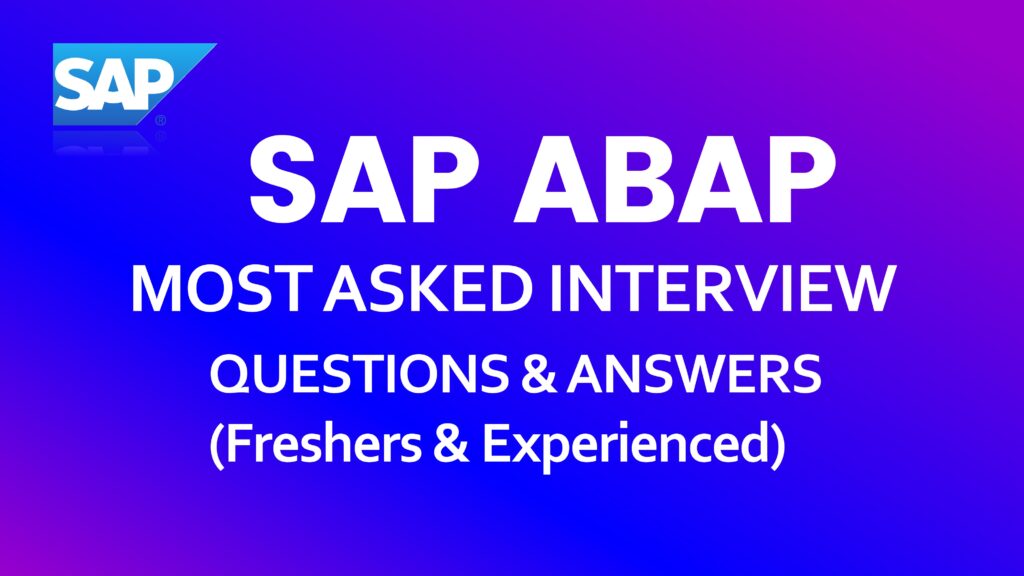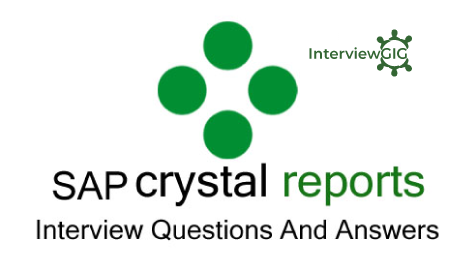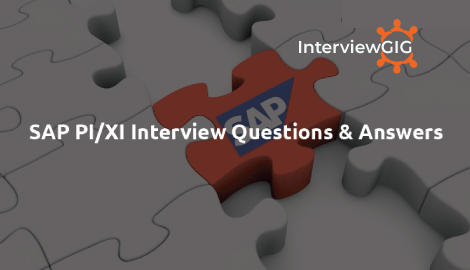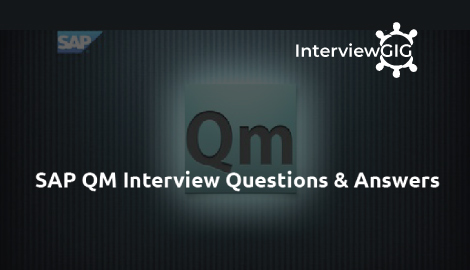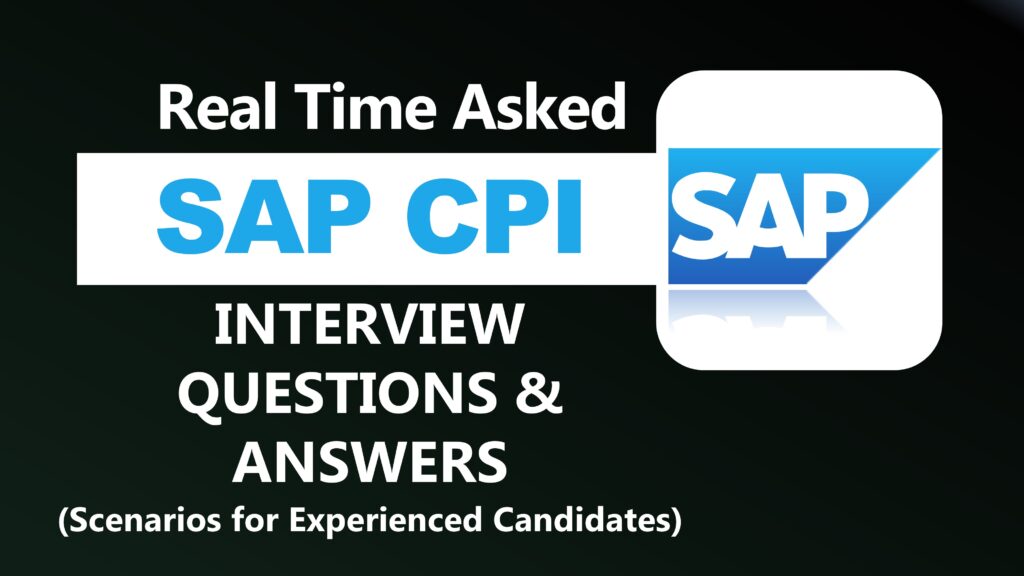What is SAP BW/BI? What is the purpose of SAP BW/BI?
SAP BW/BI stands for Business Information Warehouse, also known as business intelligence. For any business, data reporting, analyses and interpretation of business data is very crucial for running business smoothly and making decision. SAP BW/BI manage the data and enables to react quickly and in line with the market. It enables the user to analyse data from operative SAP applications as well as from other business.
What are the main areas and activities in SAP/BI?
Data Warehouse: Integrating, collecting and managing entire company’s data.
Analyzing and Planning: Using the data stored in data warehouse
Reporting: BI provides the tools for reporting in web-browser, excel etc.
Broad cast publishing: To send the information to the employees using email, fax etc.
Performance: Performance of the company
Security: Securing the access like using SAP logon tickets from portal
What is data Integrity?
Data integrity is to eliminate duplicate entries in the database.
What is table partition?
Table partition is done to manage the huge data to improve the efficiency of the applications. The partition is based on 0CALMONTH and 0FISCPER.
There are two type of partitioning that is done
- Database partitioning
- Logical partitioning
What is data flow in BW/BI?
Data flows from a transactional system to the analytical system (BW). DS (Data Service) on the transactional system needs to be replicated on BW side and attached to info source and update rules respectively.
What is ODS (Operational Data Store)?
‘Operational Data Store’ or ‘ODS’ is used for detailed storage of data. It is a BW architectural component that appears between PSA (Persistent Staging Area) and infocubes, it allows BEX (Business Explorer) reporting. It is primarily used for detail reporting rather than dimensional analysis, and it is not based on the star schema. ODS (Operational Data Store) objects do not aggregate data as infocubes do. To load the data into an IDS object, new records are inserted, existing records are updated, or old records are deleted as specified by RECORDMODE value.
What is an ‘Infocube’?
‘Infocube’ is structured as the star schema and it is a data storage area. To create an infocube, you require 1 ‘fact table’ surrounded by 4 dimensions. The ‘fact table’ is surrounded by different dim table, which are linked with DIM’ ids. And as per the data, you will have aggregated data in the cubes.
How many tables does infocube contain?
Infocubes contain two tables, E table and F (fact table).
what are the maximum number of dimensions in infocubes?
In infocubes, there are 16 dimensions (3 sap defined and 1 customer defined)
What is the difference between ODS and Infocube?
The difference between ODS and Info-cubes are
- ODS has a key while Info-cubes does not have any key
- ODS contains detailed level data while Info-cube contains refined data
- Info-cube follows Star Schema (16 dimensions) while ODS is a flat file structure
- There can be two or more ODS under a cube, so cube can contain combined data or data that is derived from other fields in the ODS
What is the dimension in BW? How would you optimize the dimensions?
A dimension in BW is a collection of reference information about a measurable event in data warehousing. In this context, events are known as “facts”. For example, a customer dimension’s attributes could include first and last name, gender, birth date etc. To optimize the dimensions, do not add most dynamic characteristics into the same dimension and make the dimension smaller. Also, define as many dimensions as possible, and the dimension should not exceed 20% of the fact table size.
What are info objects?
Characteristics and key figures will be called as info objects. ‘Info-objects’ are similar to fields of the source system, data based on which we organize data in different info provider in BW.
What is modelling?
Designing of data base is done by using modelling. The design of DB (Data Base) depends on the schema, and schema is defined as the representation of tables and their relationship.
What is extended star schema?
Star Schema comprises of Fact tables and Dimension Tables, while the table that consists the Master data are kept in separate tables. These separate tables for Master data are referred as Extended Star Schema.
What are the extractors and mention their types?
To extract data from the system program is used which is known as Extractor.
The types of extractors in BW are:
Application Specific: BW content FI, HR, CO, SAP CRM, LO cockpit
Customer-Generated Extractors: LIS, FI-SL, CO-PA
Cross Application (Generic Extractors): DB View, Infoset, Function Module
What is a ‘Fact Table’?
Fact table is the collection of facts and relations that mean foreign keys with the dimension. Actually, fact table holds transactional data.
What are the data types for the characteristics info object?
There are 4 types
- CHAR
- NUMC
- DATS
- TIMS
What is the use of the process chain?
The use of the process chain is to automate the data load process. It automates the process like Data load, Indices creation, Deletion, Cube compression etc. Process chains are only to load your data’s.
What are the transaction codes or T-codes for Info-objects?
The T-codes for Info-Cubes are
LISTCUBE: List viewer for InfoCubes
LISTSCHEMA: Show InfoCube schema
RSDCUBE, RSDCUBED, RSDCUBEM: Start InfoCube editing
What is the maximum number of key figures and characteristics?
The maximum number of key figures is 233 and characteristics are 248.
How can you convert an info package group into the process chain?
You can convert package group into a process chain by double clicking on the info package group, then you have to click on the ‘Process Chain Maint’ button where you have to type the name and description, this will insert individual info packages automatically.
Can an Info-object be an Info-provider?
Yes, info-object can be an info-provider. In order to do this, you have to right click on the Info Area and select “Insert characteristics as data target”.
What is multi-provider in SAP BI? What are the features of Multi providers?
Multi-provider is a type of info-provider that contains data from a number of info-providers and makes it available for reporting purposes.
- Multi-provider does not contain any data.
- The data comes entirely from the info providers on which it is based.
- The info-providers are connected to one another by union operations.
- Info-providers and Multi-providers are the objects or views relevant for reporting.
- A multi-provider allows you to run reports using several info-providers that are, it is used for creating reports for one or more than one info-provider at a time.
What is Conversion Routine?
Conversion routine is used to convert data types from internal format to external format or display format.
What is the difference between the Start routine and Conversion routine?
In the ‘start routine’, you can modify the data packages, when data is loading. While conversion of routine, usually refers to routines bound to info objects for conversion of internal and display format.
How to un-lock objects in Transport Organizer?
To unlock the objects in transport organizer, go to SE03à Request TaskàUnlock objects. When you enter your request and select unlock and execute, it will unlock the request.
What is update or transfer routine?
The update routine is used to define Global Data and Global Checks. They are defined as the object level. It is like the Start Routine.
What are the types of Multi-providers?
The types of Multi-providers are
Homogeneous Multiproviders: It consists of technically identical info-providers, such as infocubes with exactly the same characteristics and key figures.
Heterogeneous Multiproviders: These info-providers only have a certain number of characteristics and key figures. It can be used for the modelling of scenarios by dividing them into sub-scenarios. Each sub-scenario is represented by its own info-provider.
What are the transaction codes for process chain?
RSPC: Process Chain Maintenance
RSPC1: Process Chain Display
RSPCM: Monitor daily process chains
RZ20: To see log for process chains
What is the T.code for Data Archival and what is the advantage?
SARA is the T.code, and its advantage is minimizes space, query performance and load performance.
What is BEx Map in SAP BI?
BEx Map is BW’s Geographical Information System (GIS). BEx Map is one of the characteristics for SAP BI, and it gives the geographical information like customer, customer sales region and country.
What is B/W statistics and how it is used?
The sets of cubes delivered by SAP are used to measure performance for query, loading data etc. B/W statistics as the name suggests is useful in showing data about the costs associated with the B/W queries, OLAP, aggregative data etc. It is useful to measure the performance of how quickly the queries are calculated or how quickly the data is loaded into BW.
What is the data target administration task?
Data target administration task includes
- Delete Index
- Generate Index
- Construct database statistics
- Complete deletion of data target
- Compression of the info-cube etc…
What are the options when defining aggregates?
- *- Groups according to characteristics
- H- Hierarchy
- F-Fixed Value
- Blank-None
What do you mean by the term ‘slowly changing dimension’?
Dimensions that changes with time are called slowly changing dimensions.
Explain how you can create a connection with LIS Info Structures?
To create a connection with LIS info-structure, LBW0 connects LIS info-structures to BW.
What are the delta options available when load from flat file?
Three options are available for delta management with flat files
- Full upload
- New status for changed records
- Additive delta
What are the steps within SAP BI to create classes for BW?
To create classes or nodes for BW you have to follow the following steps,
- Click on post-processing of data sources
- Execute/Click on IMG activity
- Select BW or any desired node
- Click on context menu
- Press F6 or select “Create node”
After following these steps, a new dialog box will appear, where you can insert your node or class for BW.
What is data ware-housing hierarchy?
To define data aggregation hierarchy can be used. It is a logical structure that use ordered levels as a means of organizing data. For instance, by using time dimension hierarchy, it is possible to aggregate data from the month level to the quarter level to the year level.
How will you debug errors with SAP GUI ?
To debug errors in SAP GUI you have to follow the path
- Run Bexanalyzer
- Business Explorer menu item
- Installation check
This will show an excel sheet with start button, on clicking on it, it will verify the GUI installation and if there is any error you can fix it or either re-install it.
